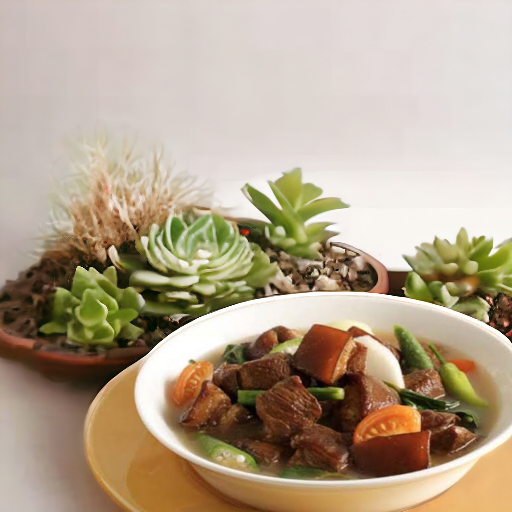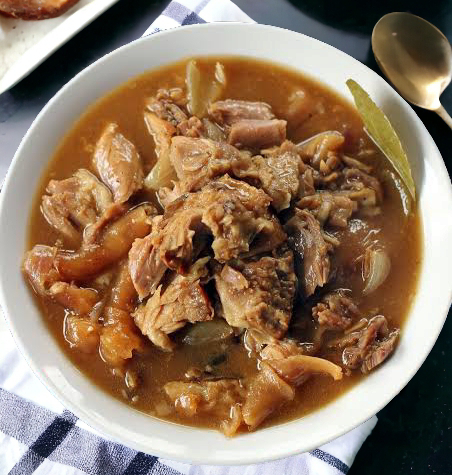A culinary journey awaits you as we delve into the intricacies of preparing Sinampalukang Adobo, a Filipino classic that marries the savory tang of adobo with the tartness of sinampalok. This beautiful fusion of flavors is what makes this dish an absolute delight.
In this comprehensive guide, we will walk you through the step-by-step process of cooking Sinampalukang Adobo, ensuring that even beginners can master this recipe with ease.
Our recipe calls for a select variety of ingredients each adding a unique touch to the dish. The star, of course, is the half kilogram of pork shoulder, tender and juicy. Accompanying it is a head of garlic, a teaspoon of black peppercorn, three tablespoons of white vinegar, and a quarter cup of soy cooking and seasoning sauce.
On the other hand, the sinigang component of the dish requires a cup and a quarter of water, a tablespoon of vegetable oil, four cups of water, one onion, two pieces each of tomato, gabi, and finger chili. To add a vibrant splash of color and crunch, we have half a cup each of radish, okra, and sitaw, a sachet of sinigang sampalok with gabi mix, and a cup of kangkong.
Start by preparing the pork shoulder. Make sure it's clean and cut into bite-size pieces. This is essential as each piece should be thoroughly marinated and cooked to perfection.
Now, marinate the pork in the combined mixture of soy sauce, vinegar, crushed garlic, and black peppercorns. Let it sit for at least an hour to absorb all the flavors.
Heat the vegetable oil in a pan and fry the marinated pork until it turns a beautiful golden brown. Now, pour in the marinade and let it simmer. Add water as needed and continue simmering until the pork is tender and the sauce has thickened.
While the pork is simmering, prepare the vegetables. Clean and slice your tomatoes, onion, radish, okra, and sitaw. Peel and cut the gabi into cubes. Wash the kangkong and finger chilies well.
In a separate pot, sauté the onions and tomatoes in vegetable oil until they are soft. Add the gabi, radish, okra, sitaw, and finger chilies. Pour in four cups of water and let it simmer until the vegetables are tender.
Once the vegetables are cooked, add the sinigang sampalok with gabi mix. Stir well until the mix is dissolved. Now, add the cooked adobo pork into the sinigang pot. Let it simmer for a few minutes until the flavors meld together.
Add the kangkong last as it cooks quickly. Let it simmer for a minute or two, then turn off the heat. Your Sinampalukang Adobo is now ready to serve.
Serve the Sinampalukang Adobo hot with a side of steamed rice. The combination of tangy sinigang and savory adobo will surely make for a memorable meal.
Congratulations! You've just mastered the art of cooking Sinampalukang Adobo. This dish, with its unique blend of flavors and textures, is sure to impress your guests and satisfy your cravings.









